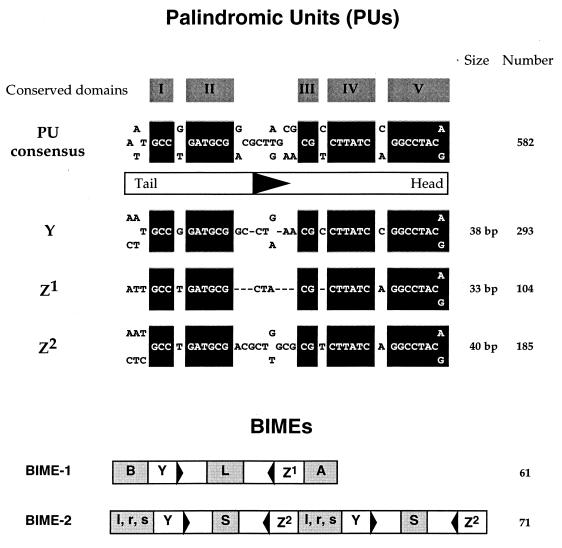FIG. 1.
BIME organization. PUs (11, 17) and BIMEs (3, 13) have been described previously. Important features are summarized here. (Top) Consensus sequences for PUs (upper part) and for the three PU types, Y, Z1, and Z2 (lower part). Domains conserved between the three types are boxed in black. Nucleotides G between domains I and II as well as C between domains IV and V are found in Y, while the same positions are occupied respectively by T and A in Z. These sequences are globally palindromic, with asymmetry elements which allow orientation of the structure, which is drawn under the PU consensus, from tail to head. A black triangle indicates PU orientation. The right-hand column shows the number of occurrences on the E. coli chromosome (1). (Bottom) BIMEs are composed of PU repeats in which both PU types (Z and Y) and orientation alternate (13). Members of BIME-1 are typically composed of one Y and one Z1 in head-to-head orientations, placed between A and B and separated by L. Members of BIME-2 are repeats of Y and Z2 alternating in opposite orientations, separated by S (between heads) and/or by either an s, l, or r motif (between tails).

